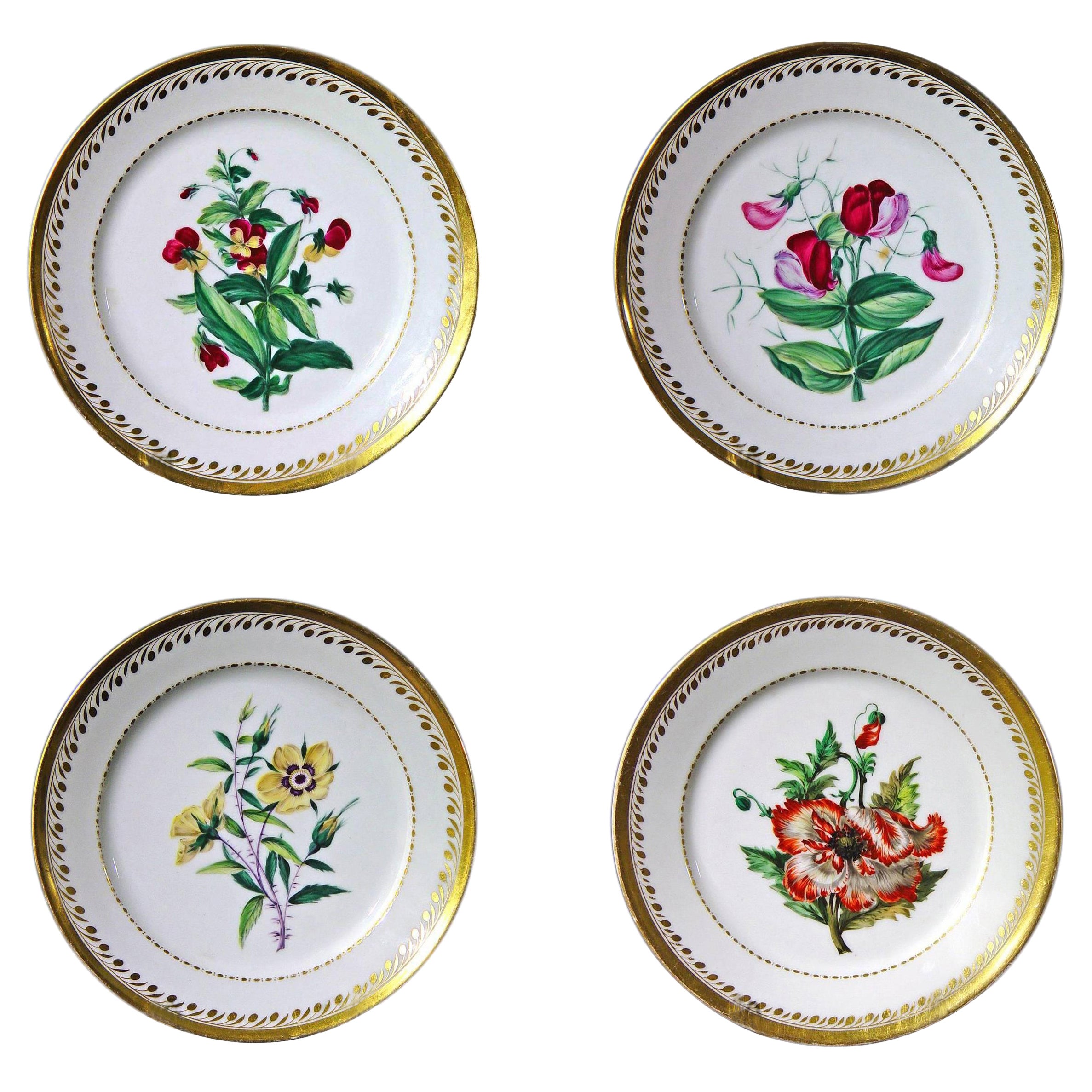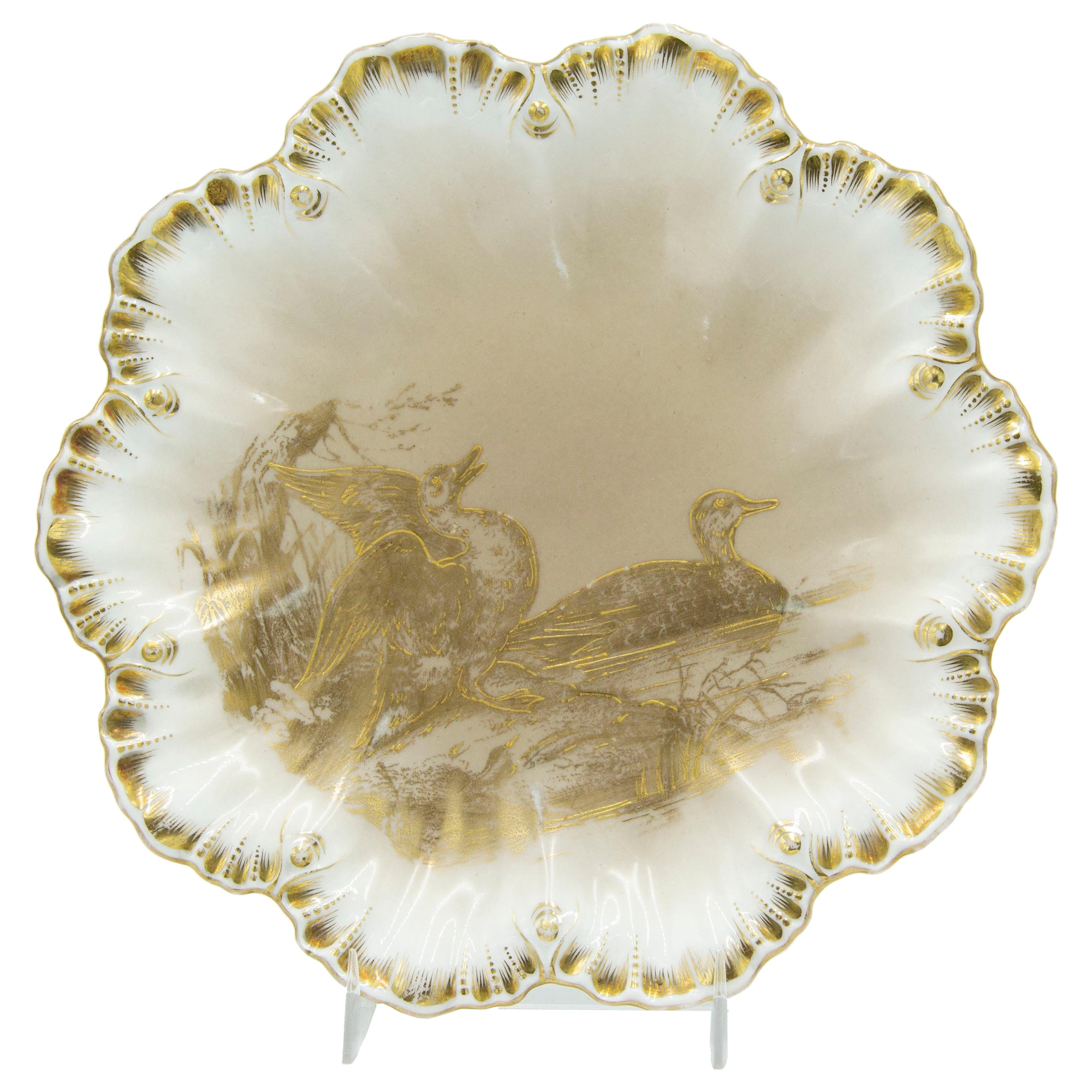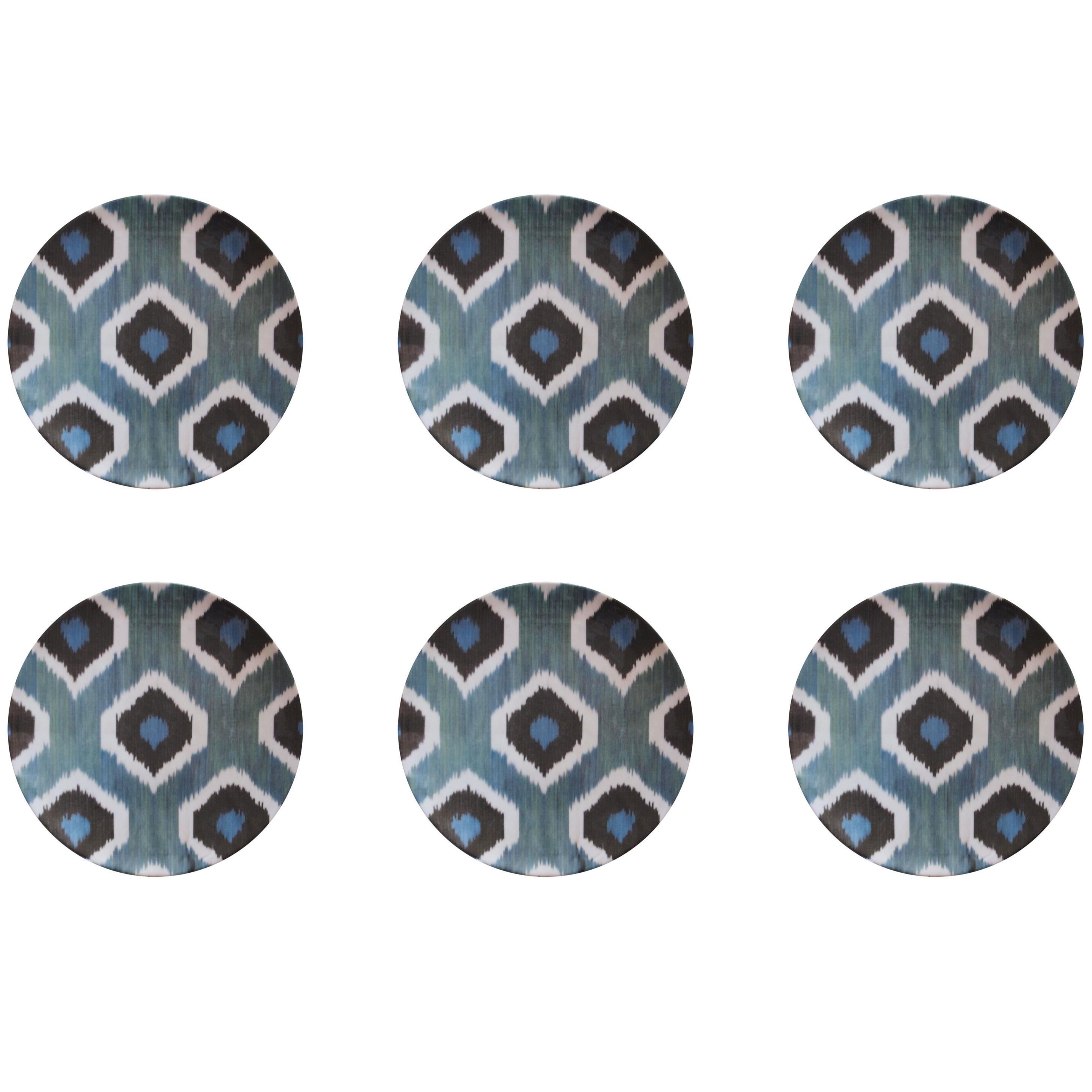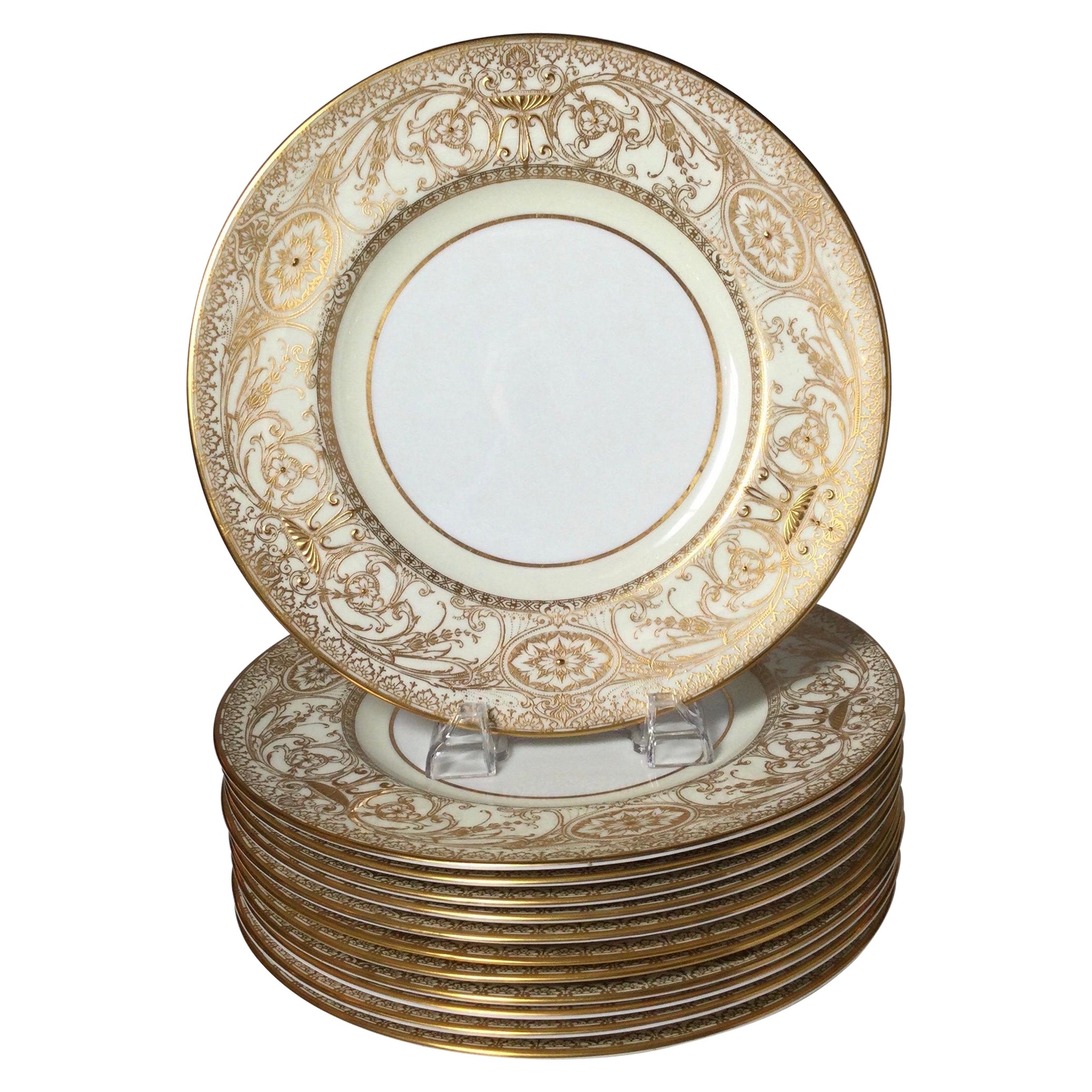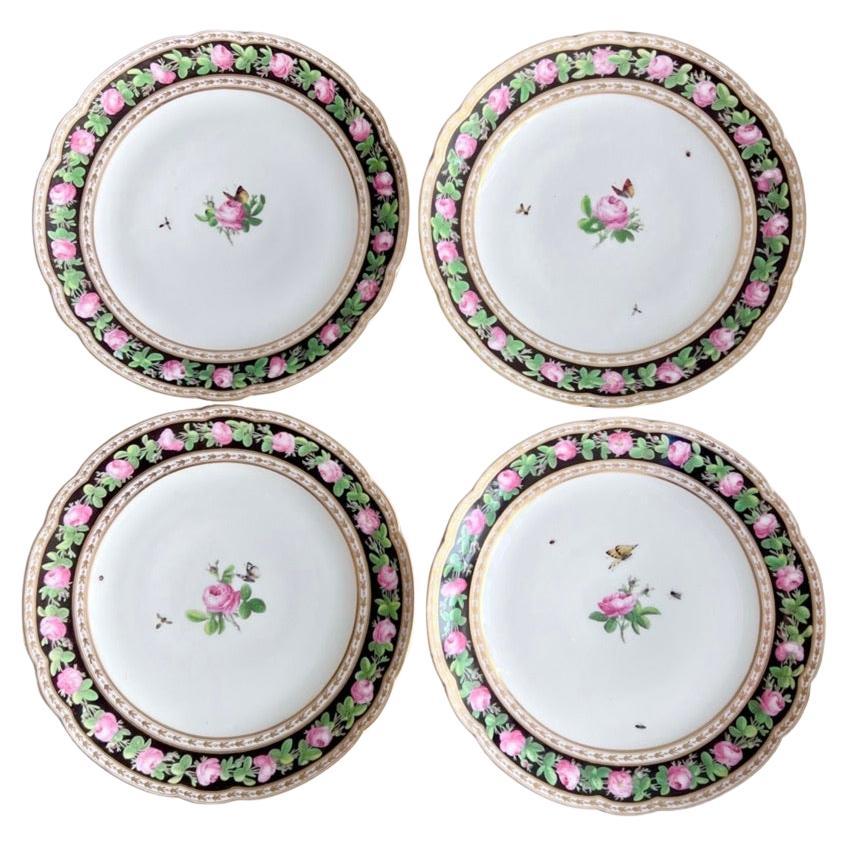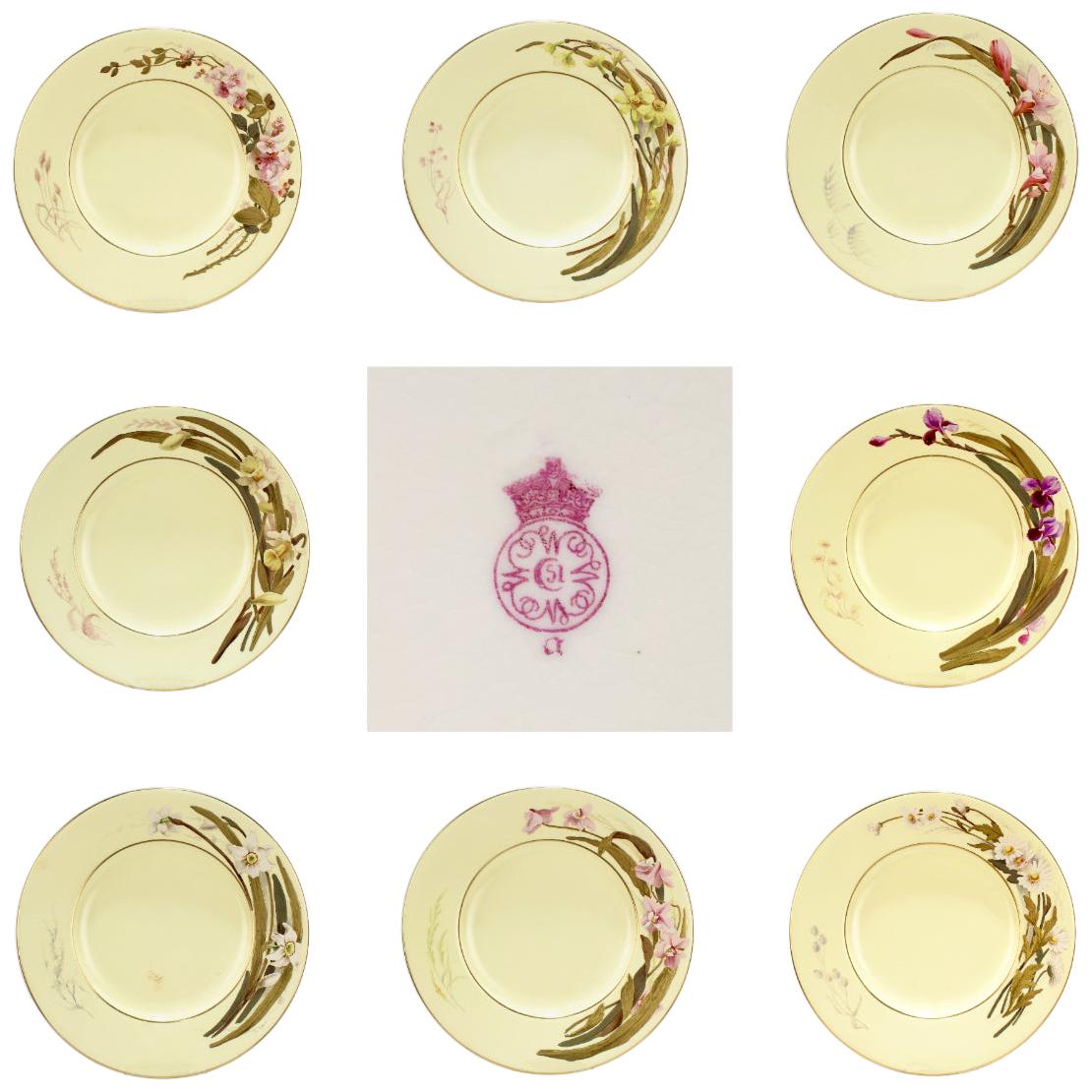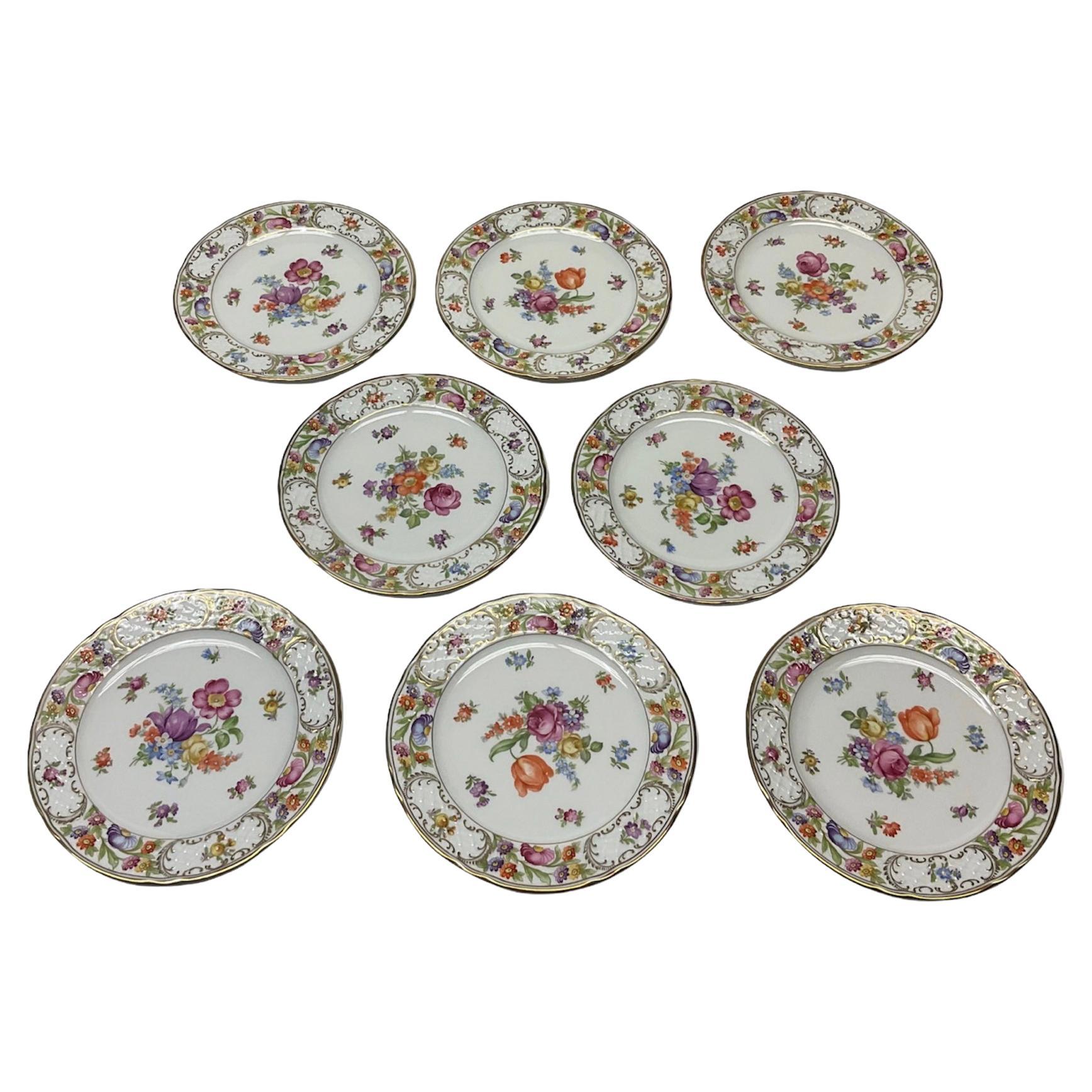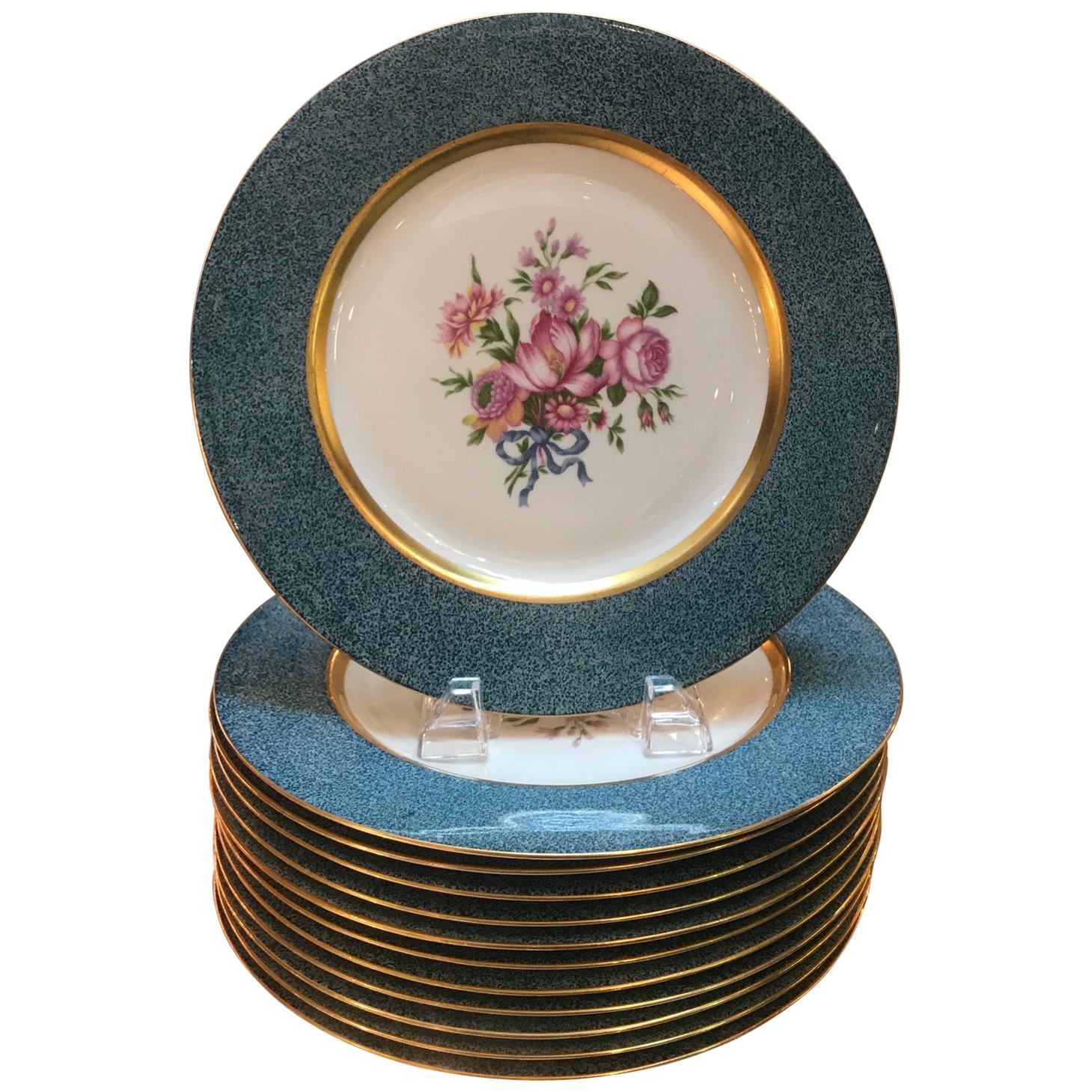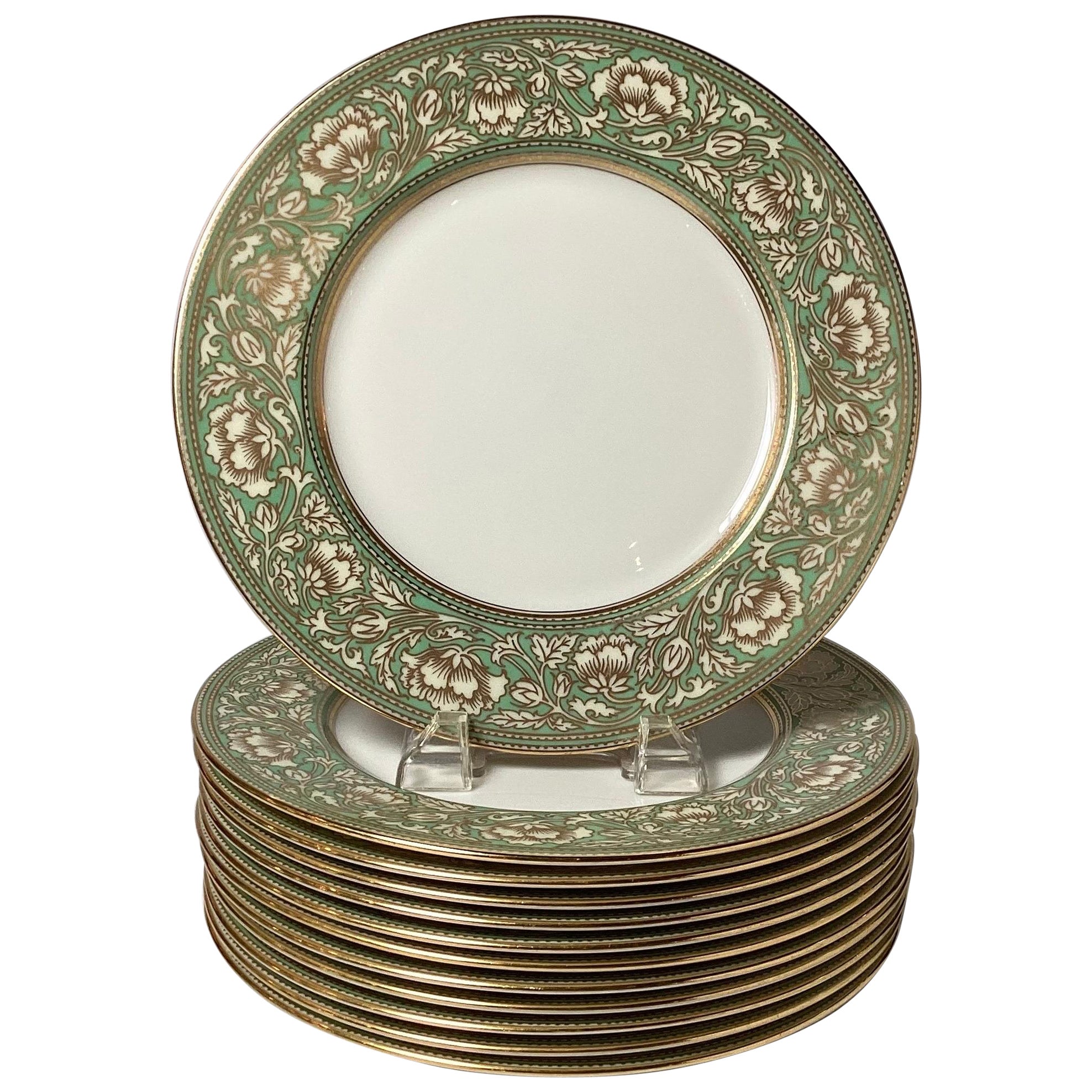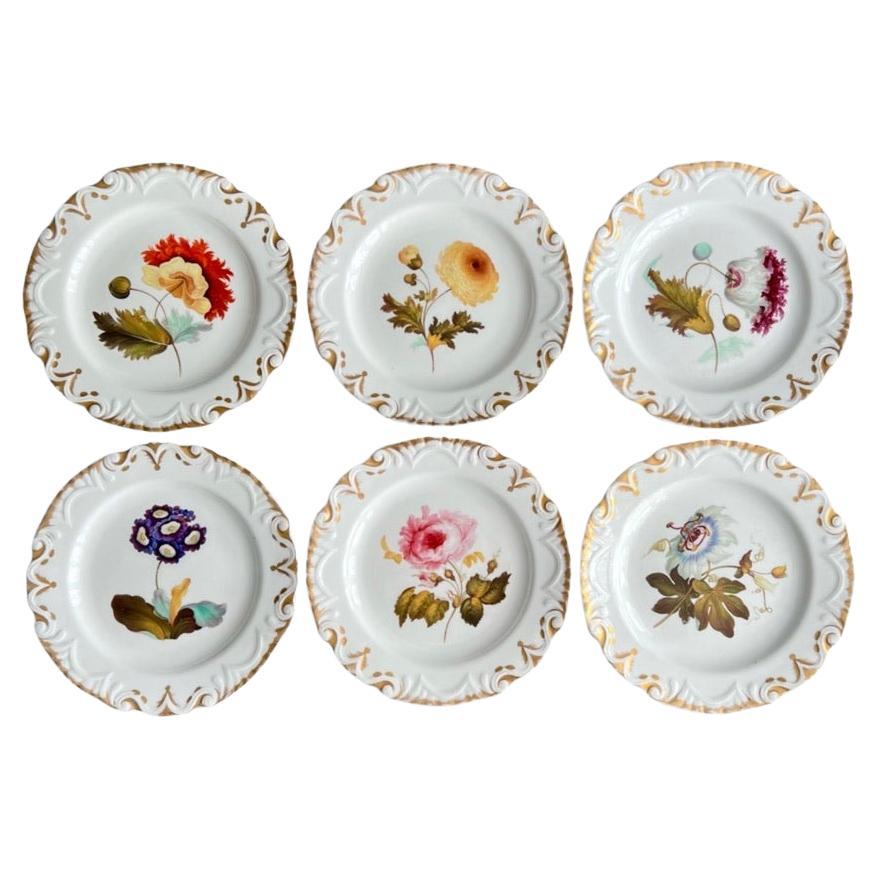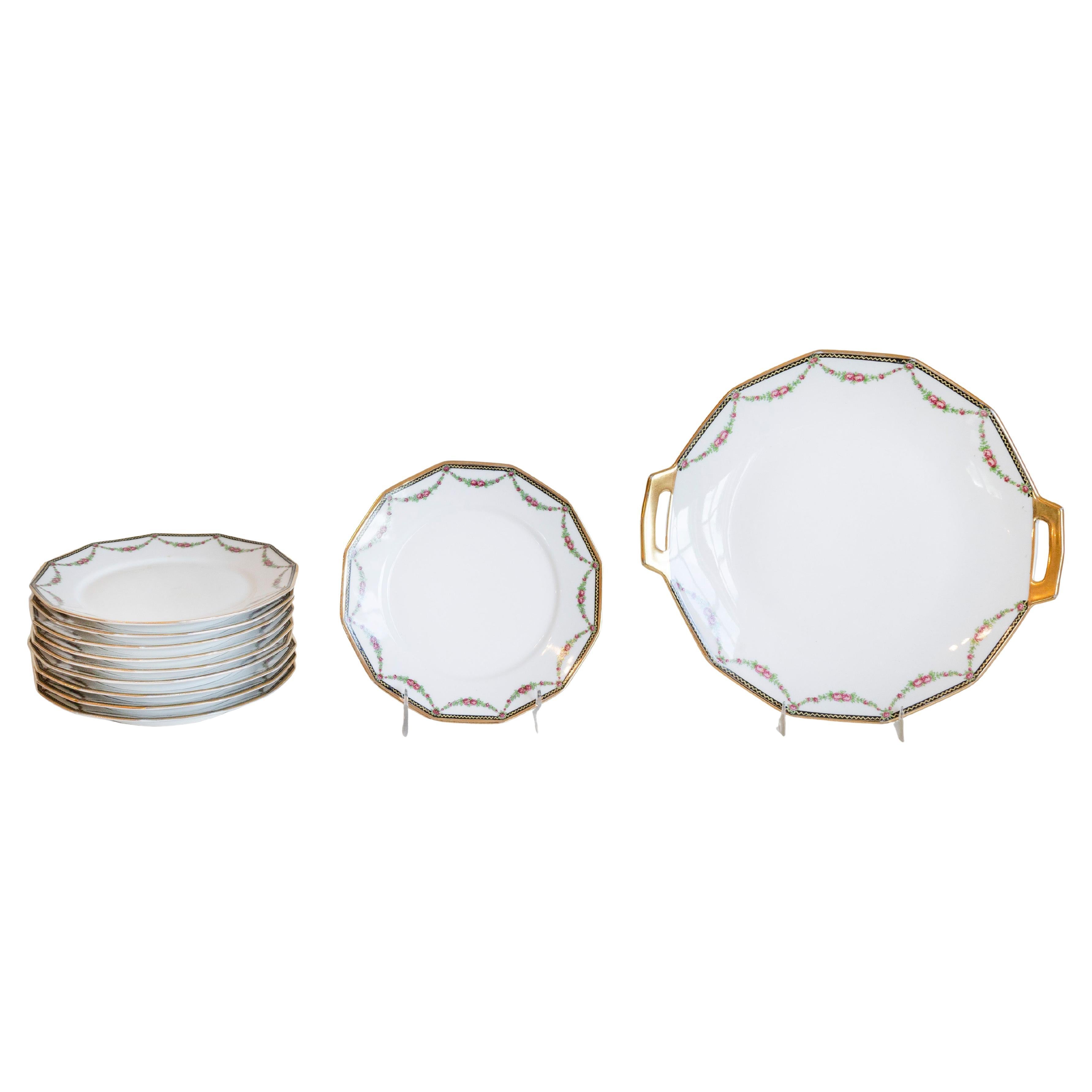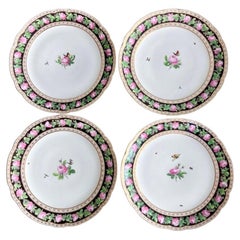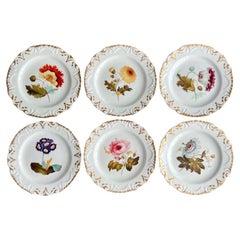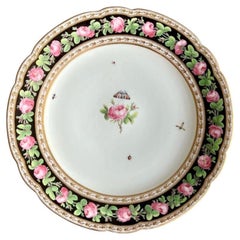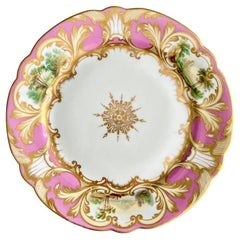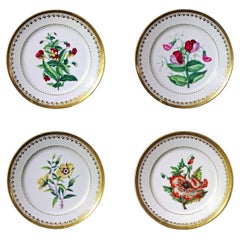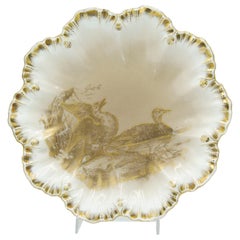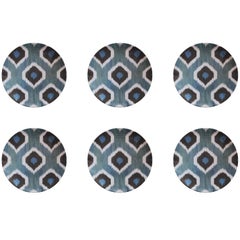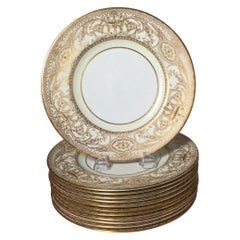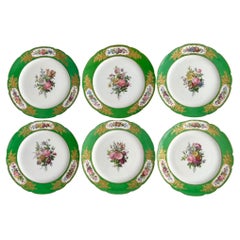
Vieux Paris Feuillet Set of 6 Plates, French Green, Gilt and Flowers, 1817-1834
View Similar Items
Want more images or videos?
Request additional images or videos from the seller
1 of 21
Vieux Paris Feuillet Set of 6 Plates, French Green, Gilt and Flowers, 1817-1834
Price:$4,100
$5,500List Price
About the Item
- Creator:Feuillet (Workshop/Studio)
- Dimensions:Height: 0.75 in (1.91 cm)Diameter: 10 in (25.4 cm)
- Sold As:Set of 6
- Style:Restauration (Of the Period)
- Materials and Techniques:
- Place of Origin:
- Period:
- Date of Manufacture:1817-1834
- Condition:Repaired: One plate has been professionally repaired. Wear consistent with age and use. Minor structural damages. Four plates are perfect, one plate has a professionally repaired break, one plate has a small chip.
- Seller Location:London, GB
- Reference Number:Seller: LT-FEU021stDibs: LU4805131035172
About the Seller
5.0
Vetted Professional Seller
Every seller passes strict standards for authenticity and reliability
Established in 2016
1stDibs seller since 2019
226 sales on 1stDibs
Authenticity Guarantee
In the unlikely event there’s an issue with an item’s authenticity, contact us within 1 year for a full refund. DetailsMoney-Back Guarantee
If your item is not as described, is damaged in transit, or does not arrive, contact us within 7 days for a full refund. Details24-Hour Cancellation
You have a 24-hour grace period in which to reconsider your purchase, with no questions asked.Vetted Professional Sellers
Our world-class sellers must adhere to strict standards for service and quality, maintaining the integrity of our listings.Price-Match Guarantee
If you find that a seller listed the same item for a lower price elsewhere, we’ll match it.Trusted Global Delivery
Our best-in-class carrier network provides specialized shipping options worldwide, including custom delivery.More From This Seller
View AllParis Clignancourt Set of 4 Plates, Black, Pink Roses, Butterflies, 1780-1790
By Clignancourt Porcelain
Located in London, GB
This is a stunning set of 4 large plates by the Clignancourt factory in Paris, probably made between 1780 and 1790.
We one more of these plates available, please see separate listin...
Category
Antique 1780s English Louis XVI Porcelain
Materials
Porcelain
$3,245 / set
Free Shipping
Machin Set of 6 Plates, Moustache Shape, White with Flowers, ca 1825
By Machin
Located in London, GB
This is a beautiful set of 6 dessert plates made by Machin around 1825, which is known as the Regency period. The items have the famous "moustache" moulding picked out in gilt, a sim...
Category
Antique 1820s English Regency Dinner Plates
Materials
Porcelain
$1,596 Sale Price / set
20% Off
Free Shipping
Paris Clignancourt Plate, Black, Pink Roses, Butterflies and Bugs, 1780-1790
By Clignancourt Porcelain
Located in London, GB
This is a stunning large plate by the Clignancourt factory in Paris, probably made between 1780 and 1790.
We also have a set of 4 of these plates available, please see separate list...
Category
Antique 1780s English Louis XVI Porcelain
Materials
Porcelain
Samuel Alcock Plate, Pink and Gilt, Landscape Reserves, ca 1855
By Samuel Alcock & Co.
Located in London, GB
This is a beautiful plate in the 8-lobed shape, with a deep pink ground and rich pale yellow and gilt acanthus and shell decoration, three scrolled reserves with exceptionally finely...
Category
Antique 1850s English Rococo Revival Porcelain
Materials
Porcelain
Yates Plate, White, Gilt Shark Teeth Pattern and Floral Reserves, ca 1825
By William Yates
Located in London, GB
This is beautiful plate made by the Yates factory in about 1825. The plate is decorated with in a white ground with finely hand painted flower reserves, gilt sprigs and a characteris...
Category
Antique 1820s English Regency Porcelain
Materials
Porcelain
$304 Sale Price
20% Off
Free Shipping
Coalport Saucer Dish Plate, Cobalt Blue, Gilt and Birds, Regency ca 1815
By Coalport Porcelain
Located in London, GB
This is a beautiful saucer dish or deep plate made by Coalport around the year 1815. This plate would have belonged to a large tea service. The plate is decorated with a deep cobalt ...
Category
Antique 1810s English Regency Porcelain
Materials
Porcelain
$284 Sale Price
20% Off
Free Shipping
You May Also Like
Antique Paris Porcelain Botanical Set of Plates, Flamen-Fleury
By Old Paris
Located in Downingtown, PA
Antique Paris Porcelain set of Botanical plates,
Flamen-Fleury Factory,
circa 1830-1835
The set of four Paris porcelain circular plates from Fl...
Category
Antique 1830s French Regency Dinner Plates
Materials
Porcelain
Set of French Victorian Limoges Porcelain Plates
By Limoges
Located in Queens, NY
Set of 12 French Victorian Limoges porcelain plates with scalloped edge and gilt bird scenes. (PRICED AS SET).
Category
Antique Late 19th Century French Victorian Dinner Plates
Materials
Porcelain
$1,600 / set
Ikat Porcelain Dinner Plates Set of Six Green Plates Made in Italy
By Bertrando Di Renzo
Located in ROCCAVIVARA CB, IT
Ikat is part of our colorful world and we are so in love with this old technique that we have reproduced some our most representative pattern on porcelain plates in order to create a...
Category
21st Century and Contemporary Italian Other Porcelain
Materials
Porcelain
$255 Sale Price / set
20% Off
Set of 12 English Raised Gilt Porcelain Dinner Service Plates
By Royal Worcester
Located in Lambertville, NJ
A regal set of 12 elaborately gild service plates, by Royal Worcester. The set with delicate broad gilt borders with a white porcelain background. The mark on the back from 1950.
Category
Vintage 1950s American Dinner Plates
Materials
Porcelain
Set of 8 Antique Worcester Porcelain Cabinet Plates with Enamel Flowers
By Royal Worcester
Located in Philadelphia, PA
An incredibly fine set of 8 Worcester porcelain plates.
With raised, enameled flowers to the borders on a custard colored ground.
Each flower is layered. The bottom layer has ...
Category
Antique Late 19th Century British Aesthetic Movement Porcelain
Materials
Porcelain
Set of Eight Dresden Flowers Empress Schumann Bavaria Salad Plates
By Schumann's Porzellan Manufaktur
Located in Guaynabo, PR
This is a set of eight Schumann porcelain salad plates. They depict a white background with a hand painted bouquet of flowers in the center. Also the trellis porcelain rim is adorned...
Category
Mid-20th Century German Belle Époque Porcelain
Materials
Porcelain
$440 Sale Price / set
20% Off
Recently Viewed
View AllMore Ways To Browse
Antique Porcelain Top Kitchen Table
Porcelain Plates Of The Chateau
Chantilly Vase
Sevres Dinner
Paris Porcelain Dinner Service
Chinese Porcelain Clock
Small Decorative Plates
Nast A Paris
Sevres Dinner Plates
Chantilly Plates
Darte Freres
Darte Paris Porcelain
Sevres Dinner Service
Nast Porcelain
Antique Glass Churn
Nast Paris Porcelain
Jean Nast Porcelain
Japanese Dinner Set
